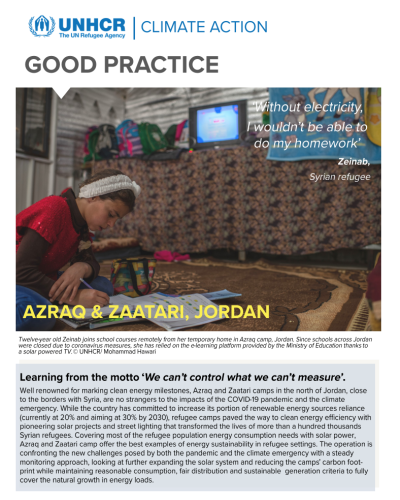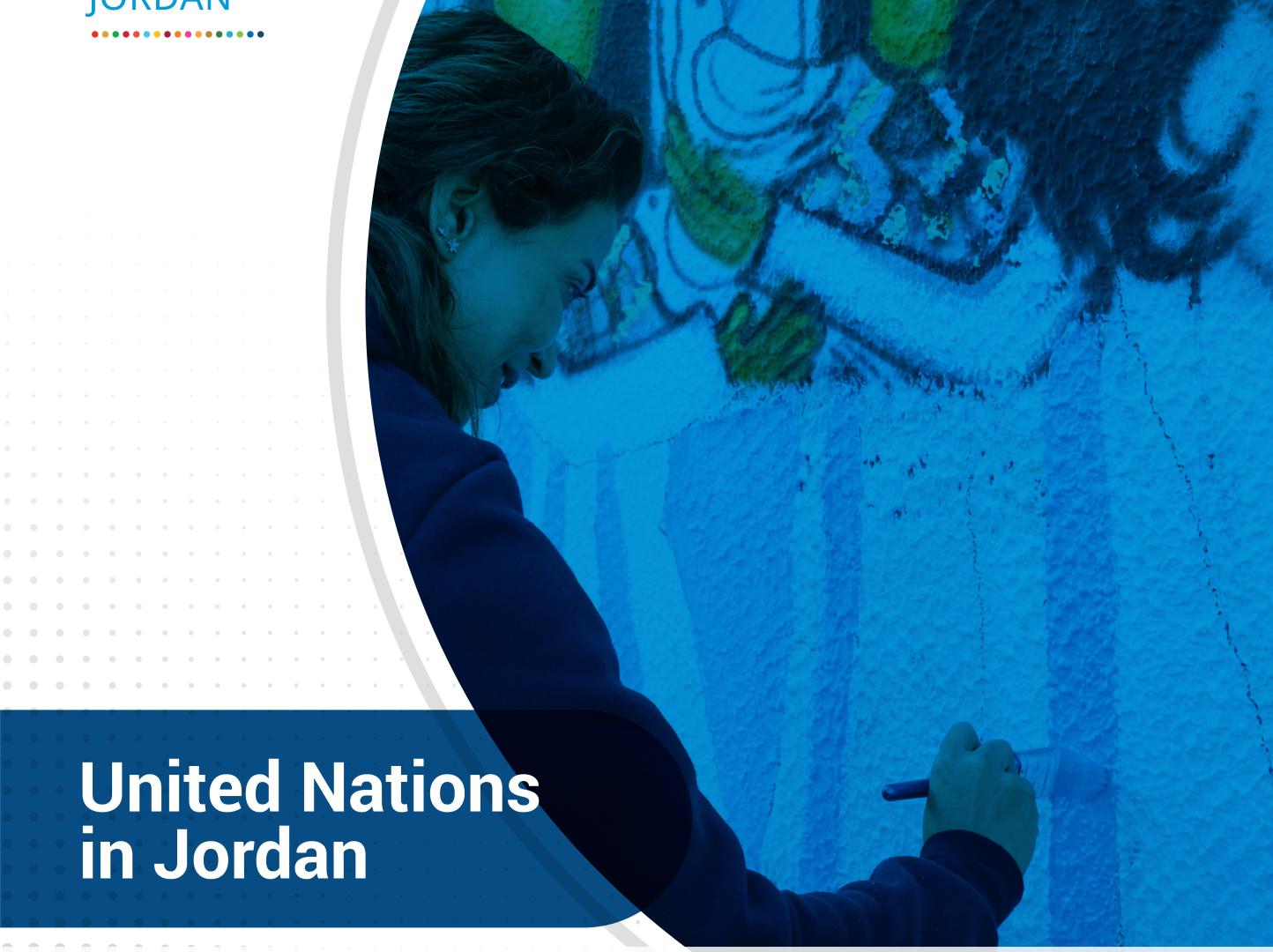Jordan Climate Action Good Practice

Azraq and Zaatari Camps are located in the north and the northeast of Jordan respectively, close to the borders with Syria. The already dry area has been facing the impacts of the climate emergency in the form of less accumulated rainfalls, harsher and colder winters, as opposed to extremely high temperatures during summers. Due to the COVID-19 pandemic, the operation has seen a sharp increase in the electric consumption needs of the refugee population, with more electrification hours being required by students attending e-leaning programmes. This consumption increase has impacted the operational budget and affected the quality of life in the camps resulting in electrification hours reductions, between 14 to seven hours per day. Major projects were implemented to reduce carbon footprint, both in offices and camps, and provide households with the required electrification hours thanks to solar energy. Azraq Camp was the first refugee camp powered by such system, involving refugees in its’ construction works. Zaatari, the largest solar plant ever built in a refugee camp, costed around 17M USD.







